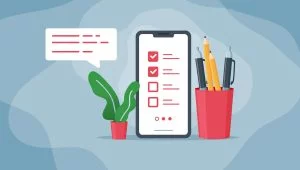Introduction
Coaching your sales team is arguably the most important part of a sales leader’s job. Effective sales teams thrive under leaders that help guide and develop their skills. By coaching your team properly, you will be setting yourself up for success.
We have created this guide to help you dial in your sales coaching skills and give you a template for any and all types of coaching meetings. These checklists will help sales leaders prepare, perform, and follow up on your sales managers’ performance and provide managers with a guide to work with their reps. Happy coaching!
Get the Sales Coaching Guide
Sales Leadership Excellence
What characterizes excellence in sales management?
- A consistent approach and defined cadence for leading a sales team.
- A coaching model that enables sales leaders to provide the right level of feedback against a defined sales process in a way that recognizes where a sales rep is in their development.
- A defined method for sales leaders to model, reinforce, and coach the sales process.
The overall purpose of this playbook is to enable sales leaders to establish a cadence and disciplined framework to manage their coaching conversations, identify potential issues early, and build on success. In addition, elements of this playbook will help leaders assess the selling competencies of their teams and customize coaching for improved performance effectively.
This guide outlines a Management Cadence across the following vital interactions:
- Sales VP & Sales Leader 1:1
- 1:1 Sales rep reviews
- Pipeline review
- Opportunity review
- Side-by-side coaching
- Daily scrum meetings
- Annual quota setting
Coaching Methodology
Defining Performance
Sales performance and individual skills move through three basic levels of development. Each one requires varying levels of direction and support from a sales leader. The goal is to provide a balanced approach while working to develop the entire sales skillset.
Level 1: Struggling
The sales rep has been taught the skill and demonstrates observable difficulties in optimizing performance.
Level 2: Developing
The sales rep can demonstrate the skill and executes well but is not yet consistently performing at a level that doesn’t require more oversight.
Level 3: Excellence
The sales rep achieves consistent results with the skill, requires little coaching, and can execute at a level where they can teach others.
Common Symptoms at Each Development Stage
- Struggling
- Does not know what they do not know
- Eager, excited
- Makes a ton of mistakes
- Thinks it will all be ok
- Wants more help
- Developing
- Learning this job is going to be more challenging than expected
- Makes fewer mistakes but is still all over the place
- Losing confidence
- Afraid to ask for help – Will it make me look bad?
- Excellence
- Understands the job/task well
- Knows what to do and does not fluster easily
- Aware when they make a mistake
- Knows how to impact performance
- Independent – demands the coach to know the game
Coaching Looks Different at Every Stage
Critical Concept
Defining performance is NOT just about a sales rep’s ability to meet quota or sales goals. Performance is the comprehensive list of selling skills or competencies. Sales leaders need to consider the whole skill set of each rep and apply the appropriate level of coaching for the observed effectiveness level.
Struggling = TEACHING
Sales leaders must apply significant direction for the selected skill. At this stage, focus on showing the rep what to do and how to do it. Then, look for them to apply the skill in their process consistently.
Developing = COACHING
Sales leaders should apply some direction, but the sales rep is now doing most of the work and receiving coaching on their performance during sales calls. Observe the rep in action, looking for positive trends and coaching the rough edges.
Excellence = SUPPORT
Sales leaders do not need to apply a lot of direction. The sales rep can do all the work. Sales leaders can push them for even higher performance levels against a skill at this stage. The focus should be on ensuring they stay the course and demonstrating what “good looks like” to other team members.
Coaching Best Practices:
- Always follow-up
- Conduct observation in the field
- Provide behavior-based coaching
- Practice
- Reinforce
- Be consistent and fair
A Structure for Feedback
Moving the performance needle
Having identified the skill(s) to be coached and the level of performance, a sales leader must provide structured feedback and coaching using an action-oriented approach. This structured approach is proven to help sales reps move the needle.
Topic/Skill
Identify the topic or skill that needs to be isolated and coached.
Goal
Identify goals and what specifically needs to happen concerning the coaching interaction.
Reality
Clearly explain the impacts (positive/negative) of the skill(s) to be coached on selling interactions with prospects/customers.
Options
Brainstorm options for improvement (ask, don’t give them the answer unless they are struggling) and empower the sales rep.
What’s Next?
Identify specific steps and obstacles and craft a timeline that includes actions, timelines, and follow-up dates.
Coaching Mistakes to Avoid
- All talk and no direction or action – This is a pitfall for a sales leader who does not know their coaching skills or is afraid to have difficult conversations.
- Not having “game film” or good examples to use – This is a mistake a “hands-off” sales leader makes due to not having listened to calls or spent enough time on the floor listening.
- All bark and no positive reinforcement – Sales leaders may forget that coaching is not just about identifying mistakes but also about balanced feedback and building on strengths.
- Not discussing consequences when appropriate – When performance gaps reach the point of no return, sales leaders must be able to escalate the conversation so that a rep realizes their job is on the line.
- Lack of timely follow-up – To be effective, coaching requires an investment in a follow-up at a near-term 1:1 (the following week); otherwise, reps will know that they can hide.
Establishing a Sales Management Cadence
A sales management cadence is a structured series of events that establish a pace for sales leaders and their reps. It helps reps set goals, track results, improve performance, and hit their number. This intentional approach is foundational for improving performance, managing pipeline/opportunities, and keeping a firm grasp on the health of the business.
A formal structure and a digitized record will make life easier for both leaders and individual contributors.
Example Cadence Framework
- Annual – Quota Kick-Off (SKO)
- Quarterly – QBR (Quarterly Business Review)
- Monthly – Pipeline Review
- Weekly – Strategic Opportunity Reviews, Formal 1:1
- Daily/As Needed – Side-by-Side, Daily Team Scrum
Success Criteria
There are three foundational practices for being effective and efficient with coaching time. First, sales leaders must manage the clock and ensure their teams are set up with efficient systems. Second, they lead from the front and set performance examples. And lastly, they need to get the most significant impact from each cadence event.
Creating a Framework Helps Ensure Long-Term Success Template
Determine timing and communications elements to help you establish expectations. Here are some things to consider:
| Calendar Timing | Communications |
|
|
We have four exercises for your preparation:
- Objectives and Agenda
- Meeting Framework
- Pre-meeting Prep
- Overview of Coaching Activities
Here is a template with four tabs coinciding with those items:
High-Level Overview of Coaching Activities Calendar
This is a real-life example of a coaching cadence calendar. We recommend daily scrums with 1:1 meetings spread throughout the month.
Cadence Events
To keep your team on track and to keep yourself knowledgeable about any struggles (or winning plays), you need to ensure you are coaching on a regular basis. That’s why you need to schedule regular touchpoints at both the individual and team levels. Below is more information about each of those meetings and some ideas for their structure.
Cadence Event – Sales VP & Sales Leader 1:1
Sales managers thrive when provided with the wisdom and leadership of a strong sales executive. Whether it’s the Sales VP, Director, or C-Suite, sales managers need a regular check-in to improve performance and lead their sales reps with confidence.
Sales VP & Sales Leader 1:1 Template
Cadence Event – 1:1 Sales Rep Reviews
Sales Managers should consistently meet with their sales reps. This gives managers the opportunity to coach on areas where they may be struggling and help reps to identify blindspots. We have a corresponding coaching template that contains a tab for the review itself as well as an assessment for your reps’ skills.
1:1 Sales Rep Review Templates
Coaching Ideas & Opportunities for Sales Rep Reviews
Here are some additional ideas for developing your reps’ skills.
Pipeline Expansion Conversation
Review the math from their demo to close and investigate the progress. Role Play Sales Calls
Focus on specific development areas such as qualifying, pitching, managing objections, closing, etc.
Fluency Practice
Test the ability to speak to various industries, products, use cases, success stories, etc.
Limitations
Talk about ‘Risks/Barriers/Limitations’ – what can go wrong, and proactively formulate a plan to mitigate/circumvent the issues. With a product like Revegy, these coaching skills are brought to the forefront directly in the platform.
Win/Loss Analysis
Explore why key deals closed won or lost.
Team Meeting
Conduct skill-based practice informed by opportunity analysis or recorded calls.
Peer Coaching
Use tenured reps to help build the skills of their peers.
Competitive Knowledge Workshop
Share points of difference and value, collaborate on experiences, case studies that drive results, etc.
Cadence Event – Pipeline Review
Managers should be checking in with their sales reps and guiding them to be able to effectively assess the health of their pipeline and build the necessary skills to confidently close gaps and make their number. Check out this template with two tabs for conducting a pipeline review and a pipeline assessment.
Pipeline Review Template
Coaching Ideas & Opportunities for the Pipeline Review
Here are some additional ideas to increase confidence in your pipeline. Fill the Funnel
Highlight deals of multiple sizes (small, medium, large) to encourage mix and multiplier achievement (2X goal).
Knowledge Check
Ensure that reps can explain the details of deals and highlight the critical requirements of prospects. Do this by outlining clear expectations. What details should matter most to the discussions? What isn’t contributing to this type of conversation?
Team Check
Have reps present a deal and allow peers to ask constructive coaching questions that will lead to advancing the sales process. Outlining rules of engagement is key: how long do you have to present the ‘vitals’ of the deal, what risks should be highlighted, what sort of questions should the team be asking, etc. (No guard rails here—this could be a morale killer versus a constructive exercise.)
Moving the Needle
Have reps describe the details of a stuck deal (a prospect not moving from their current state) and gain ideas from peers on what actions to take.
Focus on the Math
Have the rep isolate prospects to demo, demo to qualified/quantified live opportunity, closing percentage, average deal value, etc. At Revegy, we talk a lot about confidence level: What are we committing (will happen), what is best case (good probability), what is a long shot (could maybe happen if hell freezes over…). Lastly, do we have enough in the pipeline to hit our goals? What combination(s) of deals gets us to our number?
Cadence Event – Opportunity Review
Regularly analyze, develop, and execute plans with your team to win larger deals ($50K+). Check out this template with two tabs for opportunity review and assessment:
Opportunity Review Template
Coaching Ideas & Opportunities for the Opportunity Review
Here are some additional areas to focus on when conducting opportunity reviews.
Focus on the Front of the Sales Process
Engage reps on how they qualify deals and get to the middle of the sales process to understand where late-stage problems begin.
Compare Deals in the Funnel
Have reps describe deals in process and help them to prioritize accounts.
Competitive Focus
Use team knowledge to collaborate on how to differentiate and inspire action to advance deals more quickly.
Large Deal Tear Down
Dissect a more significant deal (during or after) as an exercise to understand why we won and what things we did to advance the sales process.
Cadence Event – Side-by-Side Coaching
Side-by-Side Coaching is an observation of a sales rep during sales calls, ensuring that each customer interaction has optimal impact to advance a sales opportunity. Check out this template with two tabs for side-by-side coaching review and assessment:
Side-By-Side Coaching Template
Coaching Ideas & Opportunities for Side-by-Side Coaching
Here are a few tips for providing real-time coaching.
The Practice Field
Use observations and recorded calls to role play while focusing on strengthening core skills.
The Obstacle Course
Before planned calls, ask questions about what could take the meeting off track and how they will handle the obstacles.
Watch/listen to the experts
Have the rep listen to peers who have mastered the skills they are working on.
Watch me
Take the lead on some calls side-by-side; let the rep hear the differences in how you handle specific situations and discuss.
Cadence Event – Scrum Meeting
Use the scrum meeting to set the daily pace for sales by running a consistent meeting that is productive, engaging, informative, and helps identify areas where sales reps are stuck. Here is the scrum meeting template:
Scrum Meeting Template
Tips for Leading the Meeting
- Do not let people talk for too long; keep them on task.
- Help the reps with their stuck items and encourage other team members to offer help; take it offline if the solution requires more time.
- Do not dig into individual performance numbers in the meeting; get the numbers and dig deeper individually if needed.
- Move quickly – this is not a coaching meeting.
- Encourage the team to come prepared with questions/stucks.
 Cadence Event – Annual Quota Discussion
Cadence Event – Annual Quota Discussion
Review sales rep’s plan for achieving their annual sales targets, including strategies, high priority wins that are already in motion, monthly/weekly activity metrics to drive the numbers, obstacles, and any gaps/concerns that may exist. Check out this template with two tabs for annual quota review and assessment:
Annual Quota Discussion Template
Coaching Ideas & Opportunities for the Annual Quota Discussion
Use these ideas to inspire quota discussions you will want to have with each rep.
Turn Up the Heat
Make sure to monitor progress weekly and talk about performance metrics so they understand the power of a few bad days.
Success Metrics
Keep reps focused on demos, new contacts, demo to close percentage, and deal sizes; help them see the light and get passionate about metrics.
The Stretch Goal
Use their personal goals and game-changing money desires to chart a path for them to turn into reality.
No Cruise Control
Focus the dialogue on never being comfortable with the status quo and ask reps how they can drive higher results every day (makes an effective team meeting).
The Stark Reality
If someone falls behind, help them chart a path to recovery that focuses on the controllable levers – activity and closing deals. Don’t let someone get so far off the pace that they lose motivation.
This coaching approach is meant to help guide you, your sales leaders, and your reps to develop as salespeople and win more deals. Leaders should coach their teams in a way that helps them learn and understand the path to sales excellence. When you take the time to educate and develop, you are almost guaranteed success as a leader.
None of these things will matter if you’re not keeping records. If you do not have a benchmark for measurement, if you don’t detail progress or detraction, and you don’t have a record of coaching sessions – then you can’t help the individual improve. And rather than keeping sticky notes everywhere, it is time to digitize your coaching efforts.
In conclusion, lead by example, pay attention to your team, and stay on cadence to add structure and establish clear expectations with your team.
Looking for the right technology to enable transparency and better coaching conversations? Coaching tools are one of the many features that the Revegy platform offers. We recommend checking out the pricing options in your research. We will be happy to set up a demo with you when you’re ready!
















